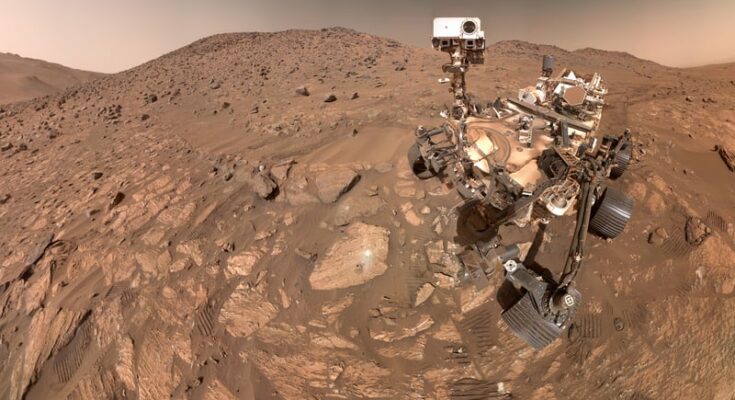NASA announced Thursday that its Perseverance rover found a rock with organic molecules and strange markings. On Earth, these could mean past life.
However, NASA is hesitant. Such signs could stem both from living and non-living things. Mars rocks have tricked scientists before, as reported by The Washington Post.
NASA is excited about a rock they call “Cheyava Falls.” The rover sampled this rock on July 21st. It was found at the edge of an old river valley in Jezero Crater. Long ago, water rushed through this valley.
Mars used to have a thicker atmosphere and more surface water. Now, it’s a cold, dry place with dust storms and no signs of life.
Ancient rock with potential biosignature
Katie Stack Morgan, the deputy project scientist, explained that they cannot yet confirm the discovery of life on Mars. However, they have found a potential biosignature. This term refers to features that might originate from living organisms, but more research and data are needed to be certain.
More Suspicious Traces on Mars
On July 22, 2024, NASA's Perseverance rover discovered a rock measuring 1 meter by 0.6 meters on the surface of Mars. This rover has been operating on the Red Planet since its launch in February 2021. The rock was named "Cheyava Falls," after a… pic.twitter.com/6GRQ1DqL5V
— Jerome Chesterton (@JeromeChes90218) July 29, 2024
The rock they found is reddish with white patches, known as “leopard spots.” These spots result from chemical reactions. On Earth, such reactions are often connected to biological activity. Stack Morgan highlighted this connection to emphasize the importance of further study.
Morgan also pointed out that if this kind of feature were found on Earth, it would likely be associated with life. However, she also noted that these chemical reactions can occur without involving any living organisms.
Mars Rover exploring ancient river delta
The rover has been exploring an ancient river delta in the Jezero Crater. It has been collecting samples of rock and soil for the Mars Sample Return mission.
One of these rocks is called Cheyava Falls, named after a waterfall in the Grand Canyon. This rock is shaped like an arrowhead and measures 3.2 feet by 2 feet. The rover collected a sample from Cheyava Falls, marking its 22nd sample so far, according to NASA.
The plan is to send another spacecraft to Mars to meet Perseverance for the sample transfer. This new lander will then launch the material into orbit. From there, it will be transferred to a spacecraft provided by the European Space Agency for the return journey to Earth.
Worries about rising costs and delays are causing people to question if NASA and its European partners can finish the Mars Sample Return mission. In 2020, experts believed the mission would cost between $3.8 billion and $4.4 billion. However, last year, this estimate jumped to between $8.4 billion and $10.9 billion. Now, the samples might not return to Earth until 2040, as reported by The Washington Post.



